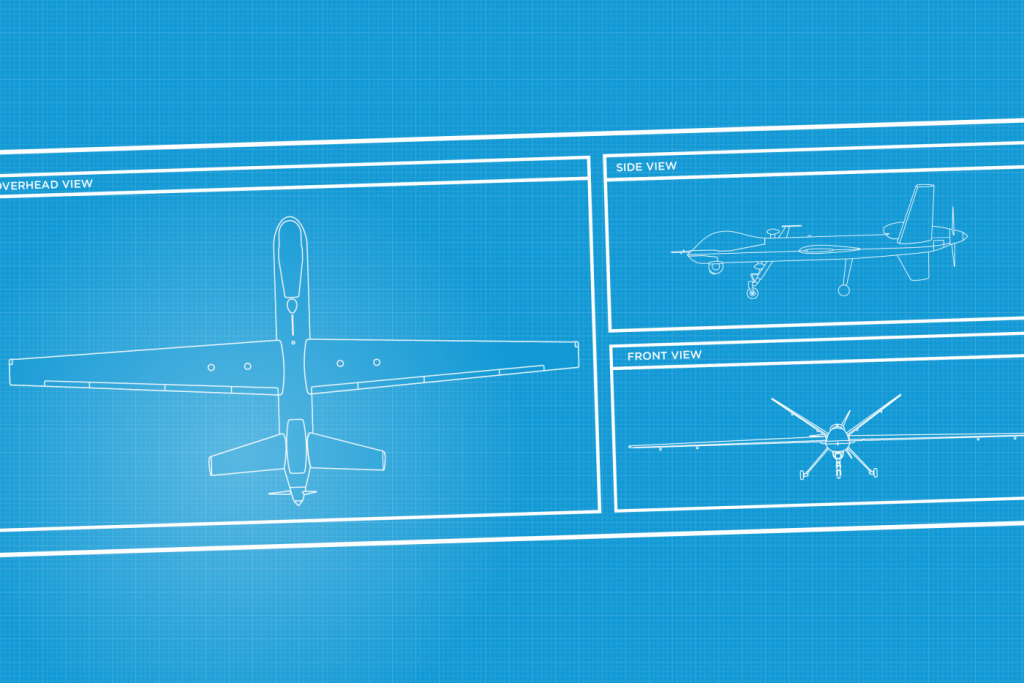The promise of electrically powered vehicles exists at every level, from e-bikes to massive construction equipment. Aircraft are no exception. While it may be some time before electric airplanes take flight, the future of electric vertical take-off and landing (eVTOL) systems is well under way.
UT researchers have begun work on a project with the US Army’s DEVCOM-Army Research Laboratory (ARL) which could soon bring a particular type of electric aerial vehicle into existence. The project, “Design of Next Generation eVTOL Systems,” unites scientists and developers from a spectrum of expertise to collectively overcome issues and make eVTOLs more feasible.
“The Army is interested in developing eVTOLs for drones, but there are significant challenges that must be overcome before that can happen,” said Matthew Mench, dean and Wayne T. Davis Dean’s Chair of UT’s Tickle College of Engineering, who is serving as lead on the project. “We’re talking about weight, durability, materials, battery life, charging, and so on. It’s a complex problem, so it requires a complex solution.”
EECS Associate Professor Daniel Costinett is serving as a key part of the project.
“We’re working with ARL to develop wireless battery charging systems for eVTOLs in order to maximize uptime,” said Costinett. “This includes both increasing the charging power to reduce charging time and minimizing the weight of the hardware to allow extended flight time. Using wireless power transfer, the process is seamless; the eVTOL automatically begins charging wirelessly when it lands without the need for any plug or tether.”
In addition to the US Department of Defense, Bell, a longtime aerospace company most known for its UH-1 Iroquois “Huey” helicopters, and General Electric are also part of the effort, which includes initial funding of $11.3 million.
The project’s success is dependent on focus areas such as improved system integration, energy generation and storage, power conversion and transmission, the development of new materials, and the ability to implement wireless charging. Accordingly, the team was built to rise to the occasion.
In addition to the wireless charging expertise that Costinett brings to the team, several other areas of focus spread connections throughout the college and beyond: UT–Oak Ridge National Laboratory Governor’s Chair for Electrical Energy Conversion and Storage Thomas Zawodzinski and ORNL Distinguished Scientist Ilias Belharouak are working on developing and manufacturing advanced lithium-ion batteries, and MABE Professor Hans DeSmidt is developing the rotor-driven flight transmission system.
“The goal is to have an eVTOL drone that can be charged quickly, have an extended range, and be lightweight,” said Mench. “It also needs to be capable of delivering 300 to 350 pounds of goods to a battle zone safely and get back out while providing no thermal signature, all while having enough power to process other applications required for its operation.”
This high-profile collaboration not only helps researchers push the envelope on what eVTOLs are and what they can do, but also allows students to take part in the discovery and development which will, someday, result in fully charged flight.
Through the project, graduate students from Zawodzinski’s, Costinett’s, and DeSmidt’s labs are working alongside some of the most talented engineers and scientists in their respective fields, forming mentorships, contributing to research outcomes, and discovering career paths.
The overall project is part of the ARL’s Versatile Tactical Power and Propulsion (VICTOR) program. Through VICTOR, the US Army hopes to revamp its unmanned vehicle program to give it better, more efficient, more flexible options when the need arises.
